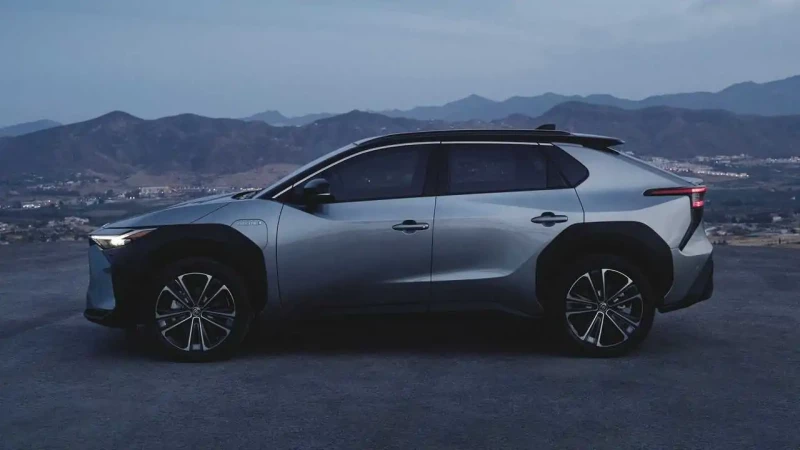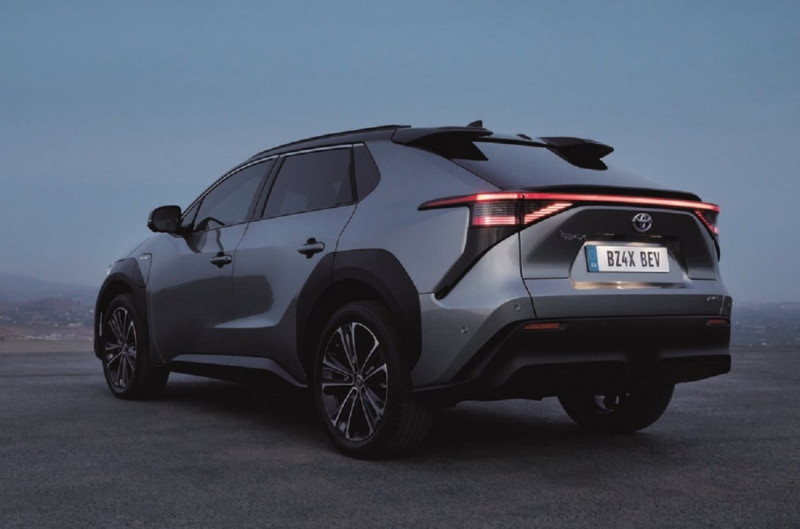2022 Toyota bZ4x leads brand’s EV Charge
Toyota has released first details and specifications for its bZ4x, the car giant’s first all-electric model, that’s available to order from mid-December. The first model from its ‘beyond Zero’ sub-brand, the bZ4x has been co-developed alongside the Subaru Solterra, and will spearhead the launch of seven bZ cars by 2025. Eventually, Toyota will have a 15-model electric vehicle range.
The bZ4x design stays true to the concept, with a bold look featuring sharp lines, oversized plastic wheel arches that make up most of the front wings, and a narrow band of high-gloss trim where the upper grille would usually be positioned. Rather like the Vauxhall ‘Vizor’, this neatly hides forward-facing sensors. Toyota refers to it as a ‘hammerhead’ design, with slim headlights and an emphasis on the car’s front corners.

Its proportions are also intriguing, because it’s 85mm lower than the RAV4 Hybrid, yet has a 160mm longer wheelbase. The bZ4x is based on the e-TGNA platform, with a slim battery pack located beneath the floor that forms part of the chassis.
The bZ4x design has also been dictated by the wind tunnel, with deep bumper ‘air curtain’ apertures to smooth airflow down the sides of the SUV, a split roof spoiler, rear duck-tail lip spoiler, rear diffuser and ‘precisely angled rear screen’. The front lower grille also has an automatic shutter to adjust cooling, that can shut to reduce drag at higher speeds.

Designers have aimed for a living room ambience inside, using soft, woven trim and satin-finish detailing. The dashboard has been given a slim and low construction to make the cabin feel as open as possible and improve visibility, while the instrument and infotainment displays have been shifted up towards the driver’s eyeline. The aircraft-style yoke from the concept has been replaced with a conventional steering wheel. There’s also said to be class-leading legroom for all occupants, an adjustable boot floor and up to 452 litres of boot space.
With a 71.4kWh lithium-ion battery pack, a driving range of ‘more than 280 miles’ is quoted, with just a modest decrease in range in sub-zero temperatures thanks to a heating system that includes a heat pump. An 80% charge takes around 30 minutes using 150kW charging, and a 6.6kW on-board charger is standard. Toyota also claims owners should expect just a 10% reduction in battery capacity after 10 years or 150,000 miles of driving. A solar panel roof will also be available to help charge the battery while driving or when parked up.
Front-wheel drive versions will get 201bhp, for an 8.4 second 0-62mph time, while all-wheel drive models see this drop to 7.7 seconds thanks to a power increase to 215bhp. ‘Single pedal drive’ will also allow drivers to use just the accelerator pedal in most driving situations, with energy regeneration taking care of deceleration.


